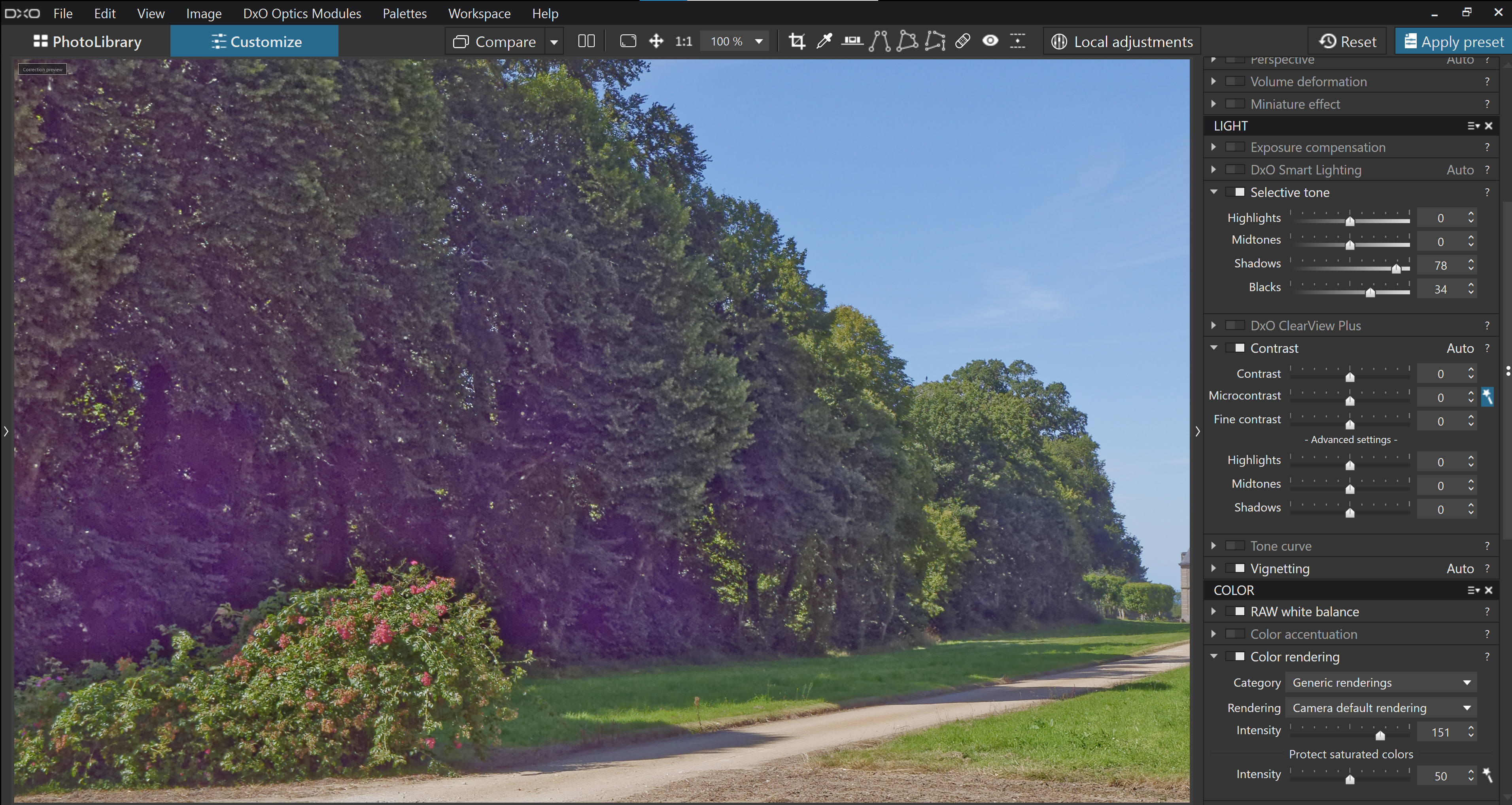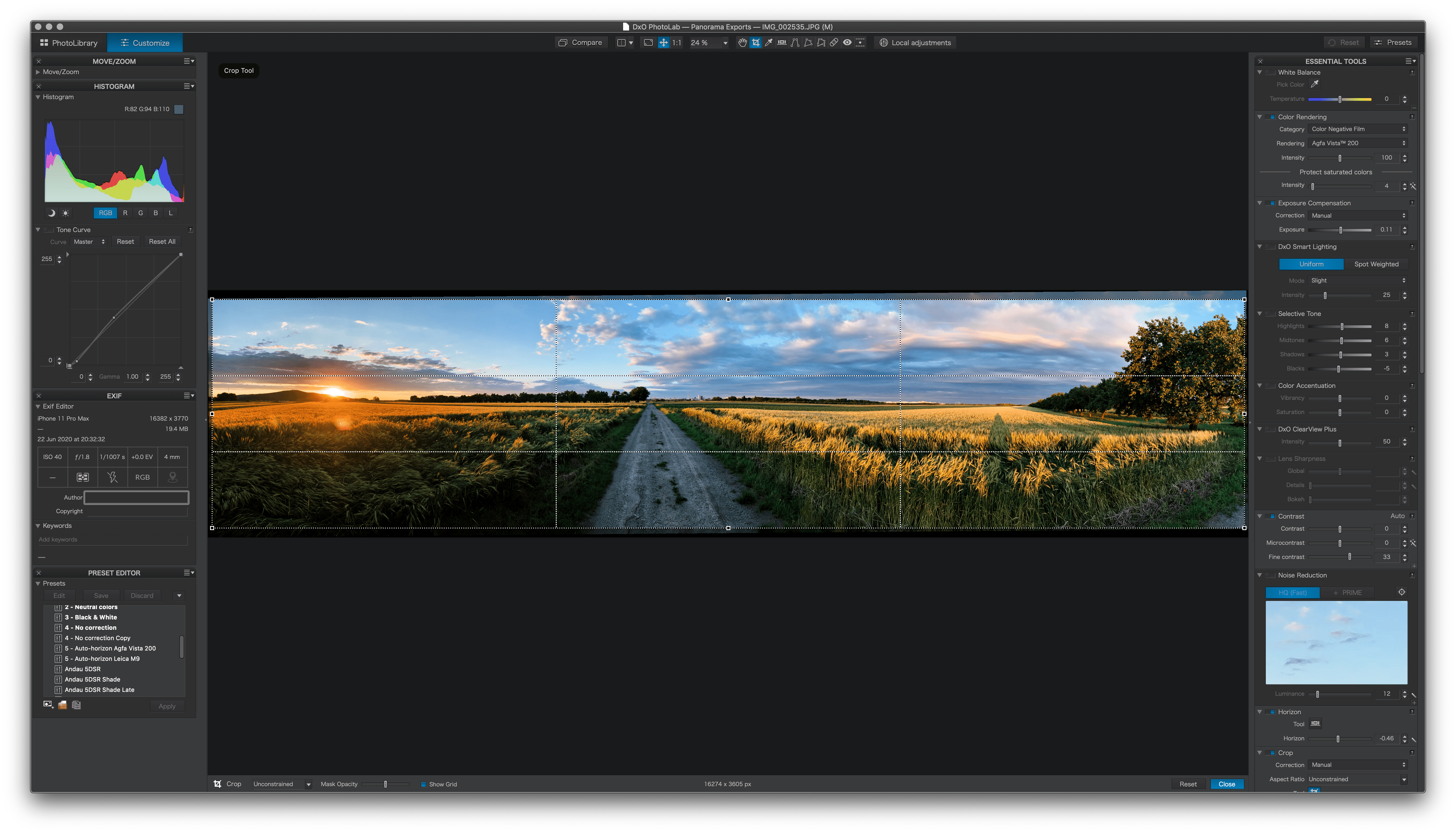
The edit above was quite a dramatic change to the original RAW file but changes can be more subtle too, check out the before and after below.

#DXO PHOTOLAB 2 HIGHLIGHT SHADOW FREE#
All of this was handled in an instance with Lumiar AI! Of course, once the template has been applied you are free to edit and change the look to your liking. This is a tricky shot to process as you need to work on bringing and retaining details in both the highlight and shadow areas and to enhance the colour and vibrance of the scene as well as thinking about a good crop for the scene. Image corrected in DxO Photolab and enhanced with Luminar AI Whilst this is a contrasty backlight scene you can see from the histogram that the the RAW file will have nearly all the data from both the shadows and the highlights recorded.Īnd here is that same image after being corrected in DxO Photolab and then output as A TIFF file to Luminar AI. I underexposed by -0.7 of a stop to keep the detail in the sky. The image above was taken on my small travel camera, a Lumix LX100. Templates are just that, starting points to creative image enhancements. For instance, I have created a basic template that only uses the AI functions of Luminar AI, If I do not like the suggested templates I use my basic template as a starting point for processing my image. I have found some templates to be more useful than others, and you can even create your own. Luminar AI will analyse those images too and using AI apply just the right amount of corrections and enhancements to the synched images. One of the really interesting features of using Luminar AI is that if you have a set of similar images, once you have applied a template and made any adjustments, you can then synch the edits to the other images. Once you have applied the template you are free to make further adjustments to your image through the edit tab in Luminar AI.

The templates are a combination of using AI and more traditional photo adjustments. Based on the content it suggests one or more templates to apply to your image. Luminar analyses your image looking for people, objects and other elements in your photos. However, when you remove the hyped marketing and start to use Luminar AI as intended, the results are very good. Skylum’s approach to using artificial intelligence to analyse, suggest and edit images brings a whole new way of thinking and working when processing your images.Īt first, I was not sure that Skylum had delivered on their promise of “ AI photo editing. Awesome. Now Luminar AI has come along from Skylum which promises to change the way that you edit. Repeat this with all tools until you can connect slider effect of first app with the slider(s) in PL.I am a longtime fan of DxO Photolab and the Nik Collection especially for correcting and then editing my images. And grass, (highdetailed smal things) which got oversharpend when using clearview in higher levels.īest way to find your way in al the contrasttools is open your application which have a known behaviour in clarity and dehaze and such, create a project, folder with some examples you would use contrast as tool and push a slider al the way up to 100% and -100% to see what happens and then try to replicate that preview in PL.

#DXO PHOTOLAB 2 HIGHLIGHT SHADOW SKIN#
Skin of people benefits from finecontrast. Works great to saturate, turning brightnes down, colors without sharpening.

So vibrance up means clearview/mircocontrast down.įine contrast is like blacklevel in other applications but not the same. On problem is when you use “vibrance” to get “blue” in the sky, microcontrast tend to over draw the edges and it gets “unreal”. I use it often to set base, gentle push of the slider. So it isn’t evenspread like “microcontrast” is. The point of clearviewplus is it try’s to detect edges and enhances this wile it saturate the planes of colors.


 0 kommentar(er)
0 kommentar(er)
